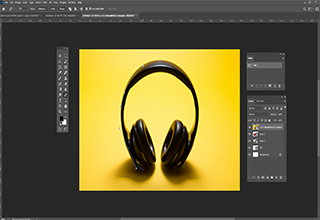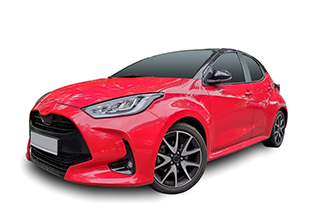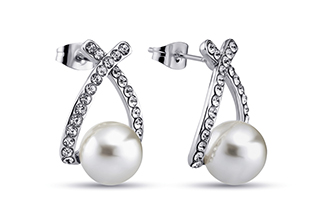In today’s world of digital marketing and online commerce, the presentation of products is essential to driving sales. Consumers rely heavily on visuals when making purchasing decisions, and how a product looks online can directly influence whether a potential buyer becomes a customer. This brings us to the concept of a clipping path, a powerful image-editing technique often used to enhance the appearance of product photos.
In this article, we’ll dive deep into what a clipping path is, why it’s so important for e-commerce businesses, and how it can make a significant difference in online success. Let’s explore this process step-by-step.
A clipping path is a vector-based technique used in image editing software, most commonly Adobe Photoshop. It allows you to isolate specific objects or parts of an image from the rest of the background. When an image editor creates a clipping path, they essentially “cut out” the product from its original environment, making it possible to place the object on a new background or even keep it on a transparent one.

The process involves manually drawing or outlining around the subject of the photo using a pen tool, creating a path that delineates the boundaries of the object. The resulting path is then applied to the image, essentially masking everything outside of it. Anything inside the path remains visible, while anything outside of it can be removed, altered, or replaced.
Key Characteristics of Clipping Path:
Not all clipping paths are created equal. Depending on the complexity of the image, there are various types of clipping paths used:
The online marketplace is visually driven, and the importance of professional, clean, and attractive product images cannot be overstated. For e-commerce sellers, a clipping path offers numerous advantages in showcasing their products. Here are some reasons why it matters:
One of the main reasons to use a clipping path is to improve the visual appeal of product images. Clean, well-defined product photos provide a professional look that builds customer trust. A poorly edited image or a cluttered background can distract buyers and make the product appear less desirable.
For instance, in fashion e-commerce, a clipping path allows the item of clothing or accessory to stand out without distractions, making it easier for customers to focus on the product itself. Similarly, in electronics or home decor, isolating the product helps highlight the key features buyers care about.
Consistency is crucial for e-commerce branding. If a business offers a variety of products, presenting each one in a consistent style across all listings creates a uniform and professional appearance. Using a clipping path, sellers can ensure that all products are displayed with similar backgrounds, lighting, and angles, leading to an aesthetically pleasing shopping experience.
For instance, if you’re selling a range of products, such as shoes or gadgets, you can create a standardized white background for all product photos. This helps in building brand identity and looks more cohesive, especially on platforms like Amazon or Etsy, where consistency is key.
In e-commerce, most platforms (like Amazon and eBay) prefer images with white or transparent backgrounds. The use of a clipping path allows product photos to be easily stripped of their backgrounds and placed on a uniform white backdrop. This not only meets the requirements of these platforms but also allows customers to focus on the product without being distracted by irrelevant background elements.

For more creative product presentations, backgrounds can be swapped with lifestyle imagery. For example, a piece of furniture might be shown in a living room setting to give customers a better idea of how it would look in a home environment. Clipping paths make it possible to swap backgrounds without altering the product itself.
High-quality product images directly influence conversion rates. Studies show that online buyers rely on images to decide whether to purchase a product. According to a study by MDG Advertising, 67% of consumers consider image quality to be “very important” when making purchase decisions.
Using clipping paths to create flawless product images increases the likelihood of turning a viewer into a customer. When a product looks attractive, professional, and visually compelling, shoppers are more likely to click “buy.” Additionally, product images that show fine details or multiple angles can help buyers make informed decisions, leading to fewer returns and more satisfied customers.
Clipping paths allow product images to be used in a variety of contexts without having to reshoot or edit the images from scratch. Once a product has been isolated from its background, it can be used in different marketing materials, including:
By maintaining a high level of control over the image, businesses can quickly adapt product photos for different marketing needs, saving both time and resources.
E-commerce sellers often have to deal with hundreds or thousands of product images. Clipping paths streamline the editing process, especially for businesses that need to meet the high standards of popular marketplaces.
Outsourcing clipping path services is a common practice in e-commerce, allowing businesses to focus on operations, marketing, and sales while professional designers handle the image editing. With advanced tools and expert designers, businesses can receive high-quality product images at a fraction of the time it would take to do in-house.
Clothing and fashion accessories are among the most sold items in e-commerce. With clipping paths, retailers can ensure that each piece of clothing is displayed against a clean, consistent background. This allows customers to appreciate the details, texture, and fit of each garment without distractions.
Fashion retailers often use multiple clipping paths to showcase various angles of a product or zoom in on intricate details like buttons or stitching.
Jewelry photography is notoriously challenging due to the fine details and reflections. Clipping paths help isolate rings, necklaces, bracelets, and other jewelry items from their backgrounds, making the product the focal point. Additionally, jewelry pieces can be placed on custom backgrounds that complement the design without overpowering it.

Tech-savvy consumers want to see clear and sharp images of the electronics they are considering buying. Whether it’s a smartphone, tablet, or laptop, clipping paths are often used to highlight the product’s sleek design and features. By removing the background, tech products appear more modern and desirable.
Large items like furniture can be difficult to photograph, but clipping paths make it easier to isolate these products and place them on a white background or within a styled room setting. This enhances the visual appeal while allowing buyers to envision how the product might look in their homes.
For products that come in packages—such as food items, cosmetics, or toys—clipping paths help create professional product listings that focus solely on the package and product design. This type of image editing is crucial for making packaged goods stand out on shelves or e-commerce platforms.
To fully harness the power of clipping paths in e-commerce, businesses should follow these best practices:
In conclusion, a clipping path is an indispensable